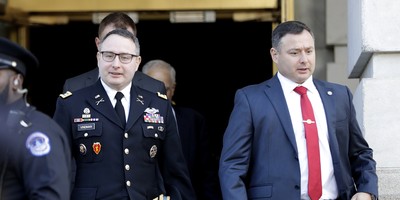It's time to throw out that old map with the red states and blue states. The map that implies that all but a handful of states will definitely vote Republican or Democratic and that the real contest will be decided in Florida or Ohio or whatever.
For a time, the map served its purpose. Only three states changed parties between the 2000 and the 2004 presidential elections, and the average change in percentage margin in those states was only 1.5 percent. But such hugely static political patterns are the exception rather than the rule in our history.
The last two presidential elections whose results so closely resembled each other were 1952 and 1956, when the two parties nominated the same candidates and only four states' results were different.
In 2000 and 2004, the Republicans nominated the same man and the Democrats nominated men with similar personas and similar places on the political spectrum.
This year, it's different. The Republicans will nominate John McCain, and the Democrats seem 95 percent certain to nominate Barack Obama. There are important differences between them and their parties' previous nominees. Many votes that went Democratic in 2000 and 2004 are available to McCain. Many votes that went Republican in 2000 and 2004 are available to Obama. And many of the new voters surging into the electorate may be available to both candidates.
Voters have a clear generic preference for the Democratic Party, but recent polls show a McCain-Obama race to be close. And don't be surprised if those numbers move around in the course of the campaign.
It's not like we haven't seen voters move around before. At the beginning of the 1990s, it was conventional wisdom that Republicans had a lock on the presidency and Democrats had a lock on Congress, or at least on the House of Representatives. After all, Republicans had won five of the last six presidential elections and Democrats had held control of the House for 36 years.
Recommended
But in 1992, voters elected a Democratic president, and in 1994 they elected a Republican House (and Republican Senate, as well). In 1988, Florida and New Hampshire voted 61 percent and 62 percent for George H.W. Bush -- solidly red states. But in 1992 and 1996, New Hampshire voted for Bill Clinton. And in 1996, Florida did, as well. In 1992, Montana, Colorado and Georgia voted for Bill Clinton. By 2000, these were solidly Republican states.
In these years, different groups of voters moved in different directions. Suburbanites in our largest metropolitan areas, repelled by the cultural stands of religious conservatives, trended heavily toward Democrats. Voters in rural areas in the South, Great Plains and Rocky Mountains, repelled by the cultural liberalism and environmental policies of the Clinton administration, trended heavily toward the Republicans.
In or around 1995, these alignments froze into place and pretty much stayed there for 10 years. Helping to freeze them were particular personal characteristics of the two dominant political figures of these times, Bill Clinton and George W. Bush.
But now Bush is not on the ballot and Hillary Clinton's flagging campaign has been sending her husband to places like Chillicothe, Ohio. John McCain does not have the Texas swagger and up-front religious commitment that turned many voters away from Bush and his party. Barack Obama does not seem to have the wobbly moral compass that turned many voters away from Clinton and his party.
The demographic factor most highly correlated with voting behavior in 2000 and 2004 was religion, or depth of religious belief. Within each relevant religious group, the more observant tended to vote Republican and the less observant Democratic. That may no longer be the case. Voters may well split along other lines, as voters in industrial states once split along lines of income or union membership, and voters in states with heavy early 20th century immigration split along sectarian lines (Catholic Democrats versus Protestant Republicans).
If I were running the McCain or Obama campaign, I would be doing in-depth polling and focus groups in 30 to 40 states and nationally, as well, trying to determine which voting groups are moving or moveable toward my candidate and which are moving or moveable the other way. I would certainly not be writing off states that were lost by my party's 2000 and 2004 nominees by 5 percent or more, and I would not assume that states they carried by that much were in the bag. It's time to throw out the old map and search for clues to what the new map will look like.






















Join the conversation as a VIP Member